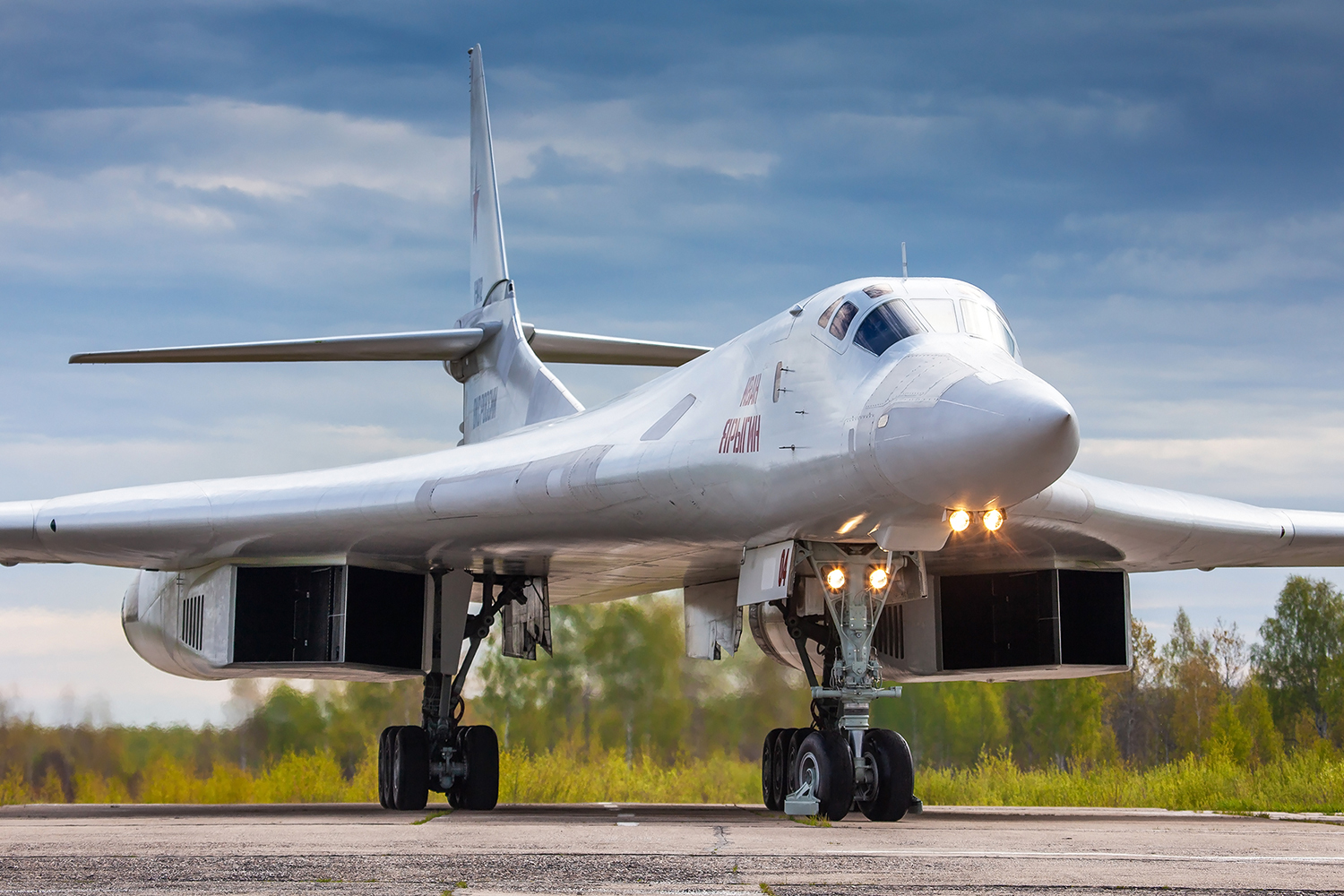At the Aero India 2023 expo, Russia’s United Aircraft Corporation (UAC) announced that it has decided to name its brand-new nuclear Tu-160M bomber after the first woman cosmonaut in space, Valentina Tereshkova.
The UAC Chief Yury Slyusar told the reporters at the Aero India 2023 exhibition that “the first built Tu-160M has been named in honor of Valentina Tereshkova.” The all-new bomber aircraft had undertaken its maiden flight over a year ago, in January 2022.
The first Tupolev Tu-160M strategic missile-carrying bomber constructed from scratch finished factory testing in late 2022.
The strategic bomber performed maneuvers throughout its test flight to evaluate the aircraft’s stability and control in the air, the functionality of its airborne systems and engines, and the onboard radio-electronic equipment.
The Tu-160M is an upgraded variant of the Tu-160 bomber, the latter being the backbone of the Russian Aerospace Force’s long-range bombers alongside the Tu-95MS.
The VKS has deployed these bombers in the ongoing war to destroy targets deep inside the Ukrainian territory. It is the world’s heaviest supersonic military aircraft with a variable-sweep wing.

After Russian President Vladimir Putin decided to modernize the bomber fleet, Russia began the program to resume manufacturing the modified Tu-160 strategic bombers in their Tu-160M variant. The new variant has been designed to strike enemy targets with nuclear and conventional weapons in remote areas.
To carry out the program, the Industry and Trade Ministry and the Tupolev Aircraft Company restored titanium vacuum welding technology, restarted the production of the bomber’s airframe assemblies, and established a new cooperation chain of advanced metallurgical, aircraft, machine, and instrument-building enterprises, with the majority of them integrated.
In addition to updating 16 already-existing Tu-160 bombers, Russia anticipates purchasing about 50 Tu-160M aircraft, with a minimum manufacturing rate of three aircraft annually. The upgraded bomber is expected to begin serial production this year. This would align with the ten aircraft orders for 2023–2027.
The update to the Tu-160M is being carried out in two stages. The first involves removing outdated components, such as bomb sighting systems, and installing the new K-042K-1 navigation system and ABSU-200-1 autopilot. The air force has used this Tu-160M1 model since late 2014.
The second Tu-160M2 phase includes the improved NK-32 engines (dubbed NK-32-02), the new Novella NV1.70 radar, a computerized “glass” cockpit, modern communications and anti-jamming equipment, as well as modern conventional and nuclear weapons.
It is customary to name Tu-160 bombers after notable figures in long-range aviation.
Valentina Tereshkova’s Flight To Space
Following Yuri Gagarin’s first and historic human spaceflight, the Soviet authorities approved the selection of female cosmonaut trainees to ensure the first woman in space was a Soviet national. This was when the USSR and the US were locked in a stiff Cold War rivalry.
As part of the Soviet plan, five women, including Valentina Tereshkova, were chosen to join the cosmonaut corps on February 16, 1962, out of more than 400 applicants. The group underwent several months of training, which included 120 parachute jumps, weightless flights, isolation tests, centrifuge testing, and jet aircraft pilot training.
In November 1962, four candidates completed the final exams. As a result, they were appointed as lieutenants in the Soviet air force (meaning Tereshkova also became the first civilian to fly in space since, technically, these were only honorary ranks).
As part of the original plan, designed as a joint mission, two women would have been launched on solo Vostok flights on successive days in March or April 1963. Tereshkova was supposed to launch first in Vostok 5 and be followed by another female nominee, Valentina Ponomaryova, in Vostok 6.
This plan was altered in March 1963, when it was decided that Valeri Bykovsky, a man, would fly Vostok 5’s mission in June with a woman. The Russian space agency chose Tereshkova to take part in the combined trip. With that flight, she became the first woman to reach space and had her photograph plastered in newspapers worldwide.
According to archives, Valentina Tereshkova’s mission lasted just under three days. However, in that limited time and with a single flight, she had logged more flight time than all of the US Mercury astronauts who had flown by that time combined.
- Contact the author at sakshi.tiwari9555 (at) gmail.com
- Follow EurAsian Times on Google News